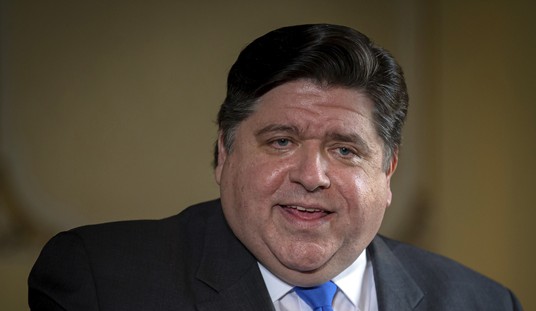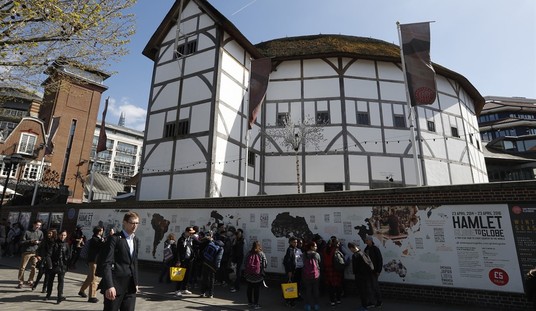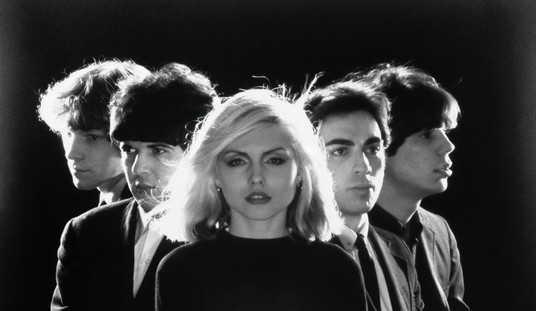Gesundheit! That’s to say ‘bless you’ or ‘may you have good health’. Is hatred as cathartic as sneezing? That explanation may not satisfy Leon Wieseltier, who spends a lot of elegant and erudite prose in the New Republic trying to understand why Andrew Sullivan’s seems to hate Jews lately. But generic hate is good enough explanation for Dan Riehl, who advises Wieseltier to relax because Sullivan hates everybody. Sullivan, he says, is a hater. It doesn’t matter who he hates, just so there’s something. The Jews are just the flavor of the month. But don’t worry, Riehl says, wait long enough and it will be everybody’s turn; and in the end Sullivan might even finish up hating himself.
That makes Sullivan uniquely enlightened in his own way. Most of us are partisan haters. He might be an equal opportunity one. One wag advised the world to “end discrimination, hate everybody”. That view has more merit than one would think. Sociologists have theorized that both beneficence and hate have their roots in group competition. They argue that solidarity is the emotional glue that binds groups together in the struggle for scarce resources. Hate is the complementary emotion; it is the shared feeling reserved for those who don’t belong — to the other — the enemy. If solidarity binds a group together, hatred animates it to face outward against the foe. If Sullivan as Riehl believes, hates everybody, it’s only because he is alienated from everyone, the lone wolf flitting from pack to pack.
Hatred and solidarity are more useful than we’d like to admit. The modern economy harnesses the milder forms of these emotions in the process known as competition. Our professional goal in life is to dominate the competitor. Make him eat our dust, or failing that, eat our shorts. Sports teams harness the same dynamic. Many sporting events are stylized arenas in which the drama of love and hatred are acted out. We want to wipe out the other team, blown them out of the arena. Maybe ten thousand years ago those expressions would not be figures of speech.
The Left has long known the power of hatred and shamelessly harnessed it. George Orwell’s put the Two Minute’s Hate at the very center of Communist Liturgy. It wasn’t ideological theory that defined the Party: it was shared loves and hatreds. Even Winston Smith who knew it for the manipulative experience it was could not help but be pulled along in its orgiastic wake. No student of modern political life and certainly every observer of the blogosphere should fail to study Orwell’s fascinating description of the process. The Two Minutes Hate involves the dehumanization of the enemy and his juxtaposition with the all-wise, beneficent paternal figure of Big Brother, who is dehumanized in his own way, turned from a man into a messiah; a kind of god figure for the Communist faithful. Crucially the Two Minutes Hate must take place in a group setting. It rarely happens when you are alone and reflective. Hard to work up a lather by your lonesome. Here’s Orwell’s description of that ceremony.
It was nearly eleven hundred, and in the records department, they were dragging the chairs out of the cubicles and grouping them in the centre of the hall opposite the big telescreen, in preparation for the Two Minutes Hate….
The next moment a hideous, grinding speech, as of some monstrous machine running without oil, burst from the big telescreen at the end of the room. It was a noise that set one’s teeth on edge and bristled the hair at the back of one’s neck. The Hate had started.
As usual, the face of Emmanuel Goldstein, the Enemy of the People, had flashed on to the screen. There were hisses here and there among the audience. Goldstein was the renegade and backslider who once, long ago (how long ago nobody quite remembered), had been one of the leading figures of the Party, almost on a level with BIG BROTHER himself, and then had engaged in counter-revolutionary activities, had been condemned to death and had mysteriously escaped and disappeared.
The programmes of the Two Minutes Hate varied from day to day, but there was none in which Goldstein was not the principal figure. He was the primal traitor, the earliest defiler of the Party’s purity. All subsequent crimes against the Party, all treacheries, acts of sabotage, heresies, deviations, sprang directly out of his teaching. Somewhere or other he was still alive and hatching his conspiracies: perhaps somewhere beyond the sea, under the protection of his foreign paymasters, perhaps even – so it was occasionally rumoured – in some hiding-place in Oceania itself.
Winston’s diaphragm was constricted. He could never see the face of Goldstein without a painful mixture of emotions. It was a lean Jewish face, with a great fuzzy aureole of white hair and a small goatee beard – a clever face, and yet somehow inherently despicable, with a kind of senile silliness in the long thin nose, near the end of which a pair of spectacles was perched. It resembled the face of a sheep, and the voice, too, had a sheep-like quality. Goldstein was delivering his usual venemous attack upon the doctrines of the Party – an attack so exaggerated and perverse that a child should have been able to see through it, and yet just plausible enough to fill one with an alarmed feeling that other people, less level-headed than oneself, might be taken in by it. He was abusing BIG BROTHER, he was denouncing the dictatorship of the Party, he was demanding the immediate conclusion of peace with Eurasia, he was advocating freedom of speech, freedom of the Press, freedom of assembly, freedom of thought, he was crying hysterically that the Revolution has been betrayed – and all this in rapid polysyllabic speech which was a sort of parody of the habitual style of the orators of the Party, and even contained Newspeak words: more Newspeak words, indeed, than any Party member would normally use in real life. And all the while, lest one should be in any doubt as to the reality which Goldstein’s specious clap trap covered, behind his head on the telescreen there marched the endless columns of the Eurasian army – row after row of solid-looking men with expressionless Asiatic faces, who swam up to the surface of the screen and vanished, to be replaced by others exactly similar. The dull rhythmic tramp of the soldiers’ boots formed the background to Goldstein’s bleating voice.
Before the Hate had proceeded for thirty seconds, uncontrollable exclamations of rage were breaking out from half the people in the room. The self-satisfied sheep-like face on the screen, and the terrifying power of the Eurasian army behind it, were too much to be borne: besides the sight or even the thought of Goldstein produced fear and anger automatically. He was an object of hatred more constant than either Eurasia or Eastasia, since when Oceania was at war with one of these Powers it was generally at peace with the other. But what was strange was that although Goldstein was hated and despised by everybody, although every day and a thousand times a day, on platforms, on the telescreen, in newspapers, in books, his theories were refuted, smashed, ridiculed, held up to the general gaze for the pitiful rubbish that they were – in spite of all this, his influence never seemed to grow less. Always there were fresh dupes waiting to be seduced by him. A day never passed when spies and saboteurs acting under his directions were not unmasked by the Thought Police. He was the commander of a vast shadowy army, an underground network of conspirators dedicated to the overthrow of the State….
In its second minute the Hate rose to a frenzy. People were leaping up and down in their places and shouting at the tops of their voices in an effort to drown the maddening bleating voice that came from the screen….In a lucid moment Winston found that he was shouting with the others and kicking his heel violently against the rung of his chair. The horrible thing about the Two Minutes Hate was not that one was obliged to act a part, but, on the contrary, that it was impossible to avoid joining in. A hideous ecstasy of fear and vindictiveness, a desire to kill, to torture, to smash faces in with a sledge-hammer, seemed to flow through the whole group of people like an electric current, turning one even against one’s will into a grimacing, screaming lunatic…
The Hate rose to its climax. The voice of Goldstein had become an actual sheep’s bleat, and for an instant the face changed into that of a sheep. Then the sheep-face melted into the figure of a Eurasian soldier who seemed to be advancing, huge and terrible, his sub-machine gun roaring, and seeming to spring out of the surface of the screen. But in the same moment, drawing a deep sigh of relief from everybody, the hostile figure melted into the face of BIG BROTHER…
The Two Minutes Hate. Nor has much changed in the intervening period except that Keith Olbermann, unlike the Ministry of Truth in 1984 needs at least 3:57 to work up a head of steam.
[youtube m5HgfwPtxLw]
Why do we watch a guy like Olbermann? To be dazzled by his intellect? Bowled over by his manly good looks? Probably not. We watch him to join in his hate or hate him for his hate. Either way it’s fun.
If the sociological theories are right, Emmanuel Goldstein, Sarah Palin, the Jew and even Barack Obama play a very special role in the world. They act as a foci for hatred around which groups form and dissipate, like attractors which pull things in or repulsors which push things away. They do what dry theory and statistics never do. They agitate us. An agitator appeals to a different part of the brain than a mere advocate does. Dick Morris says that while Obama’s policies (and their consequences in unemployment and national security) are driving the political discontent Sarah Palin represents an “existential threat” because she threatens to pull white women away from the Democratic Big Tent. Like Goldstein she is a special kind of menace: the kind that can break up a group. Unemployment presents a contextual threat. Sarah Palin threatens the pack. And when that happens the ancient memories kick in. Something in Olbermann’s unconcious brain brings him up on his legs to howl because his pack is threatened.
From that point of view, Sullivan is a rather sad figure. Maybe he has no tribe, just a generalized distaste for the world, being what was once called a guy with a chip on his shoulder. He flits from pack to pack and inhabits the margins paying his way with a kind of redirectable anger. But it is good enough on the day. We home into hatred like sharks to blood. It would be interesting to discover what percentage of Andrew Sullivan’s reader’s visit his site simply because they enjoy strong emotions. Perhaps mankind is capable of something better. Or maybe we enjoy hate; or more disturbingly, maybe we need it.
| Tocque: Requires Javascript enabled in Firefox 3.5, IE 8.0, or Safari 4.0 |










Join the conversation as a VIP Member